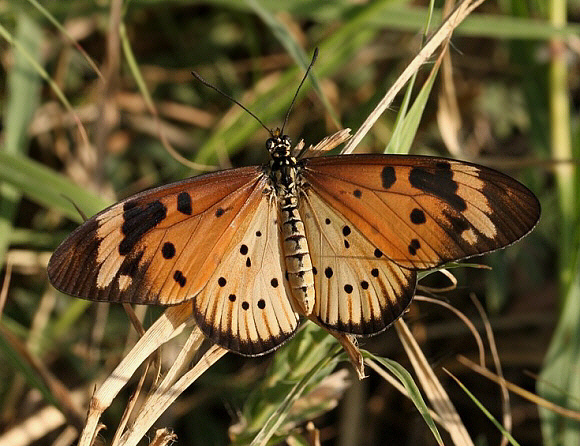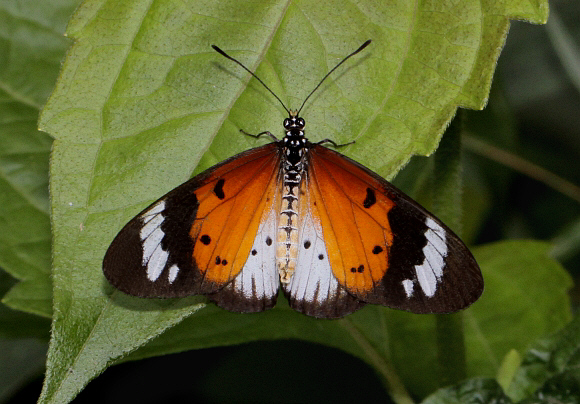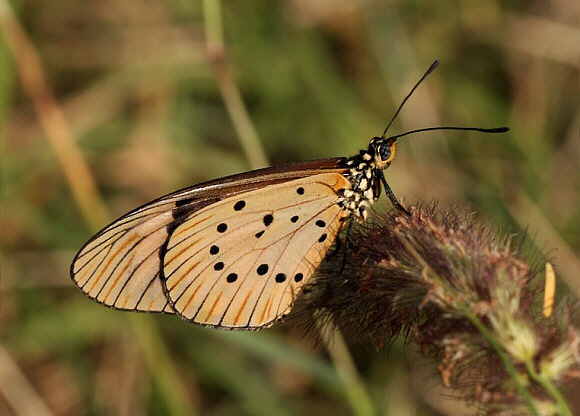
Introduction
There are 228 Acraea species, of which 223 are Afrotropical in distribution. The majority are found in the forests and savannahs of East Africa, while about 60 are found in West Africa. Beyond Africa a further 5 species occur in the Oriental region, and another is found in Australia / New Guinea. In the neotropical region there are 50 additional species, but these are normally placed in the genera Actinote, Altinote and Abananote due to differences in venation and genitalia.
All Acraea species have elongate forewings and rounded hindwings. The wings are thinly scaled and in many species are semi-transparent. The scales wear off very easily so that insects more than 4 or 5 days old have a glassy or greasy appearance. The majority of species have a predominantly brownish or greyish ground colour, marked with bands or patches of red or orange. The basal area of the underside hindwings of most species is marked with a pattern of small black spots.
Acraea encedana is distributed from Gambia to Ethiopia and Sudan, and south to Angola, Malawi, and Mozambique.
The Ethiopian form of encedana is illustrated above. A different form occurs over much of Africa, in which the apical bar on the forewings and the ground colour of the hindwings are both white. The latter form is illustrated below, and is considered to be a Mullerian mimic of Danaus chrysippus.

Habitats
This localised species inhabits open grassy areas on lowland floodplains in southern and western Africa, but is found at altitudes of 1000m or higher in Ethiopia.
Lifecycle
The larval foodplant is Desmodium salicifolium ( Fabaceae ).
Adult behaviour
Larsen, quoting Jiggins, states that “all-female broods are common, with females constituting up to 95% of local populations. Under such circumstances females aggregate in narrowly limited areas to solicit males, in effect a female lekking behaviour”.
Both sexes nectar at Tridax and other flowers.

